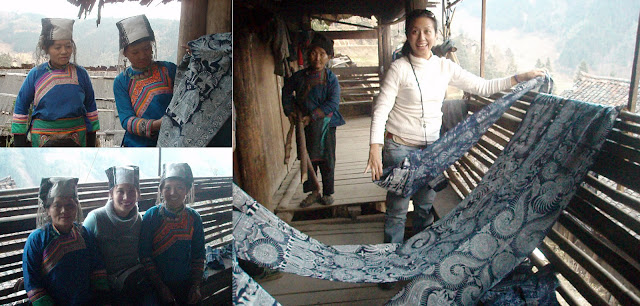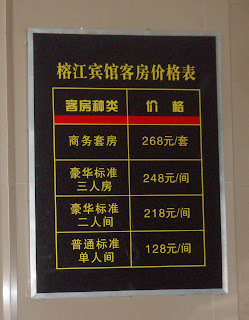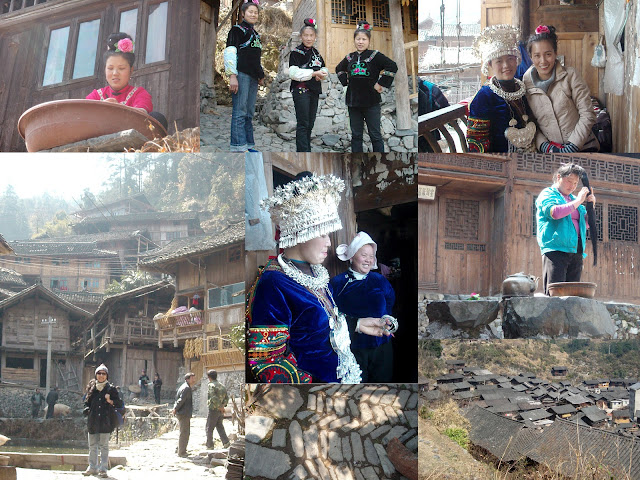After visiting Ta Tang Miao hamlet, our driver stopped by a restaurant in Yonglei town for Tyng and I to have lunch. The restaurant had quite a presentable exterior but the interior appeared to be old and unkempt. The kitchen was the last place to visit for we needed a meal to fill our stomach. Anyway, we enjoyed the meal as we were famished.
 |
| Right : I fear to know the faith of the dog in the cage |
On our way to Zairong village in Rongjiang county to visit the Pingyong Miao, we passed by another 2 towns - Danjiang and Tashi. We had little time for a walk at the markets and I came across some Miao accessories. I was unsure if there were made of silver but I bought them anyway. Some of the smaller pieces ended up on the t-shirt range which I designed and made few years ago.
 |
| Left : Silver accessories for Miao costume |
 |
| Little helpers collecting logs for burning |
All the works were done on cotton head cloths measuring a 1 foot width and 12 feet length with motifs of bird, fish, butterfly, figures, symbols of dragon and even an mythical animal named bird dragon. These works were done by the two sisters-in-law in the same family. The works were drawn with free flow and mastery of sheer skill. Yuan Ren Zhi, the daughter-in-law in the Loong family was a confident and skilled artist. She sketched her works by scraping the fabric with her finger tips before applying the wax, whereas, the young batik artist would trace the fabric with the stencils before applying the wax.
 |
| Left : 1st from left - Yuan Ren Zhi. Above: Tyng busy making selection |
We picked four pieces of the work for a good deal. Three pieces of them were sold soon after we displayed them in our little booth after the trip. Tyng was smart to keep the 4th piece before it is taken up which ended none for me. It was nice to buy at first hand and meet the artisans. I regretted for not getting more then.
| A boy from Pingyong riding a wooden tricycle |
It was more than 90 minutes drive to Rongjiang town in the dark where we were putting up for the night. Driving after dark was dangerous around the rural area as there was complete darkness on the road. Even the lighting in the little town was all dim. Most of the premises had not lightened up enough lights. I don't know why. Could it be due to insufficient electricity supply, cost saving or just the way of life. I recalled when I was young, living in a kampung (village) house in Penang, Malaysia, we never had enough bright lights as to save costs. Our big kitchen had only one light bulb. The shower room attached to the kitchen had no light at all and we had to depend on the mere dim lighting that came from the kitchen. And that continued for very long time till it was replaced with fluorescent light. But the toilet remained that way until the last day of our stay there. Somewhat eerie, isn't it?
 |
| Published rate of hotel rooms |
I thought in rural areas, people usually go to bed early, but at 9pm, the streets were still abuzz and eateries were still wide opened with guests. Tyng & me had a simple dinner at one of the little shops nearby the hotel. We spent a little time observing the people around and bought 2 corns to enjoy in our hotel room.
It was a long and eventful day. After sending emails to our loved ones, we soon found ourselves in slumberland!







